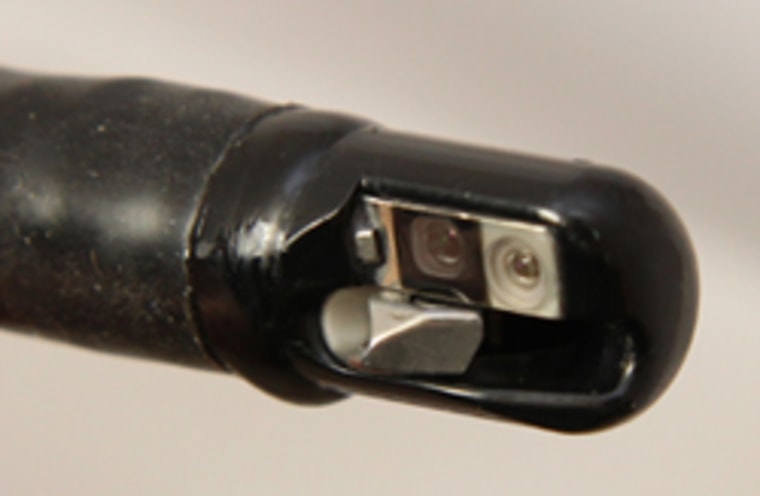The U.S. Food and Drug Administration issued a warning Thursday about a certain type of endoscope, saying the devices, used to look inside the body, are especially hard to clean.
And that’s bad news for a device that can be re-used, and cleaned, several times each day.
It’s the type of endoscope linked to an outbreak of drug-resistant bacteria that’s killed at least two patients and infected five more at the UCLA hospital. The university has warned about 180 people that they may have had the same contaminated scope used on them.
They’re used in diagnosing and treating a range of woes, from gallstones to cancer, and have a lot of moving parts.
“If this can happen at UCLA this can happen everywhere,” says infection control expert Marc-Oliver Wright.
“If this can happen at UCLA this can happen everywhere."
More than 500,000 procedures are done each year using the endoscopes, called duodenoscopes, according to the U.S. Food and Drug Administration.
“The procedure is the least invasive way of draining fluids from pancreatic and biliary ducts blocked by cancerous tumors, gallstones, or other conditions,” the FDA says.
“Duodenoscopes are flexible, lighted tubes that are threaded through the mouth, throat, stomach, and into the top of the small intestine (the duodenum). They contain a hollow channel that allows the injection of contrast dye or the insertion of other instruments to obtain tissue samples for biopsy or treat certain abnormalities,” the FDA says.
They also have a fiddly, moving part at the tip.

There’s little alternative to trying to clean and re-use the endoscopes because each device costs “thousands and thousands of dollars,” says Wright.
The devices lend themselves to carrying germs from one patient to another, says Wright, who is corporate director of infection control for NorthShore University HealthSystem in Evanston, Illinois and a member of the Association for Professionals In Infection Control and Epidemiology (APIC).
“There certainly is the potential for any sort of flexible endoscope going into your alimentary canal, your GI system through your throat or the other end,” Wright told NBC News. “You are talking about some fairly sophisticated medical equipment.”
Wright says the process for cleaning the devices is complicated.
“Immediately after a procedure, usually, these scopes are flushed with solution,” Wright said.
“Then they are allowed to sit in what is called an enzymatic cleaner. The idea is it is going in there and breaking down the organic material, whether you are talking about stomach acid or fecal material.”
Technicians then physically scrub the devices to try and get any body fluids or matter out of the nooks and crannies. “They are almost like metal pipe cleaners, going in and manually scrubbing the channels,” Oliver said.
“This can be done dozens and dozens of times per scope."
Then the scope is washed in chemical disinfectants, rinsed out and then flushed with alcohol to dry up any water that bacteria could grow in. It can take an hour or longer each time.
“This can be done dozens and dozens of times per scope,” Wright said. Making matters even more complicated: there are many different devices made by different companies, and each one has its own peculiarities. Technicians have to learn on the job.
It sounds risky — with so much potential for germs to be carried from patient to patient. And often the people getting the procedures are already very sick and vulnerable to infection.
But the alternative, says Wright, is cutting someone open surgically to get inside and remove a tumor or a gallstone. And that opens them up to infections as well as a longer and more painful recovery.